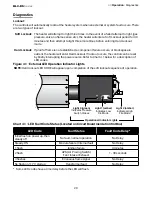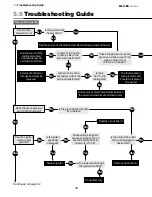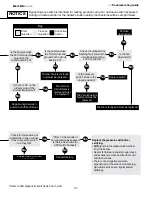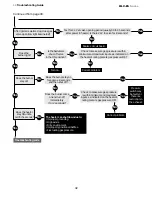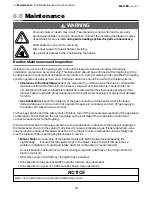
19
HL2-DS
Series
Gas Supply Installation Instructions
The gas supply to the unit heater must be connected and tested in accordance with national, state,
provincial, and local codes along with guidelines in this manual. In the United States refer to the latest
edition of the ANSI Z223.1 (NFPA54) Standard.
Supply gas piping to the unit should conform with the local and national requirements for type and
volume of gas handled, and pressure drop allowed in the line. Avoid pipe sizes smaller than 1/2”.
WARNING
!
Improperly connected gas lines may result in serious injury and death,
explosion, poisonous fumes, toxic gases, or asphyxiation. Connect gas lines
in accordance to national, state, provincial, and local codes.
Gas pressure to the appliance controls must never exceed ½” PSI (14” W.C.). Damage to the controls
may result.
Gas lines should be purged of air as described in ANSI Z223.1 (NFPA 54) or CSA-B149.1– latest
version. Installation of the piping must also conform with the local building codes or, in the
absence of local codes, with the latest edition of the National Fuel Gas Code (NFPA 54).
CAUTION
!
NOTICE
The total input to the appliance must fall /- 5% of the rated input as indicated on the
rating plate. Otherwise the heat exchanger may prematurely fail.
3.0
Installation
•
Gas Supply Installation Instructions
IMPORTANT!
Before connecting the gas supply to the burner control box:
• Verify that the heater’s gas type (as listed on the rating plate) matches that of your application and
the installation complies with national and local codes and requirements of the local gas company.
• Unless otherwise noted on the rating plate, this infrared heater is designed and orificed to operate
on standard BTU gas. Contact the factory if utilizing non-standard BTU gas.
• Check that the gas piping and service has the capacity to handle the total gas consumption of all
heaters being installed, as well as any other gas appliances being connected to the supply line.
• Check that the main gas supply line is of proper diameter to supply the required fuel pressures.
• If utilizing used pipe, verify that its condition is clean and comparable to a new pipe. Test all gas
supply lines in accordance with local codes.

























